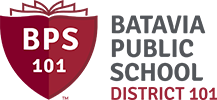Facility Accessibility
DLR Group uses real existing research to better understand how to design spaces, including applying principles of Universal Design to ensure the most accessible and supportive environment for the widest variety of users. The work of the prior Facilities Committee identified accessibility in some spaces as an unsatisfactory condition in need of remediation. One of the guiding principles from the Building Our Future Together Core Team is “Learning opportunities and experiences are available to and accessible for all students” which will ensure barriers to including all students can be removed.
BPS101 learners are diverse and the design of our facilities should address their needs. Learners who are neurodiverse, including those on the autism spectrum, are often more sensitive to sensory input and disruption or change than others; planning for neurodiverse learners, and young people who are all developing at different speeds than one another, is a key part of creating the best possible learning spaces. DLR Group draws from research to understand how much visual stimulation and color, for example, is helpful or hindering for any learner – including those with ASDs. Reducing barriers and creating safe spaces for neurodiverse learners seldom negatively impacts — and can even help – others.
Another key part of using space to support neurodiverse learners is training staff and educators to use the space as it was intended, including how to flex and change it or how to choose a lighting level so as to avoid overstimulation. The combination of a well-designed space informed by research and a “user guide” for those who will be interacting with that space on a daily basis is important for success.



